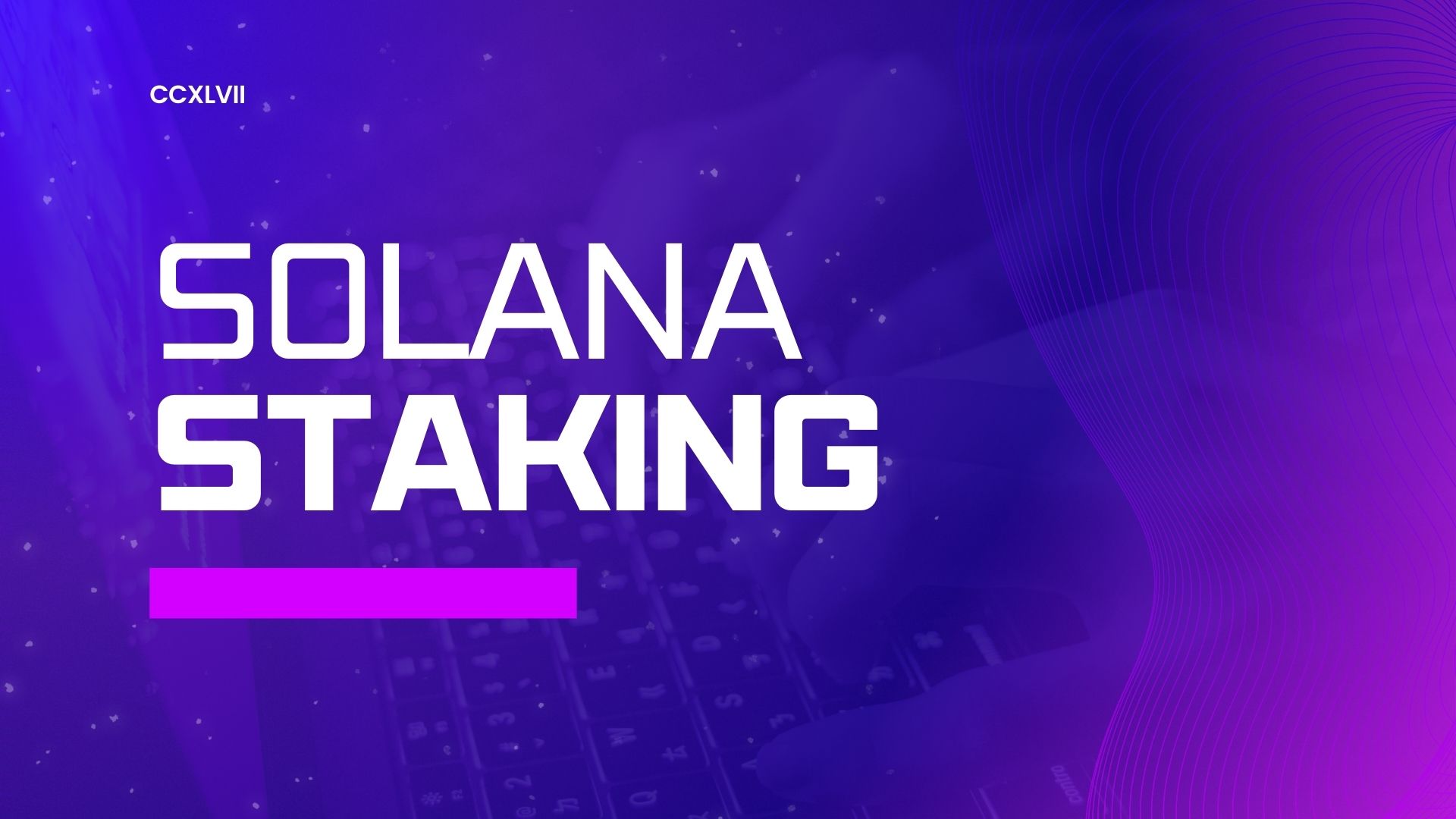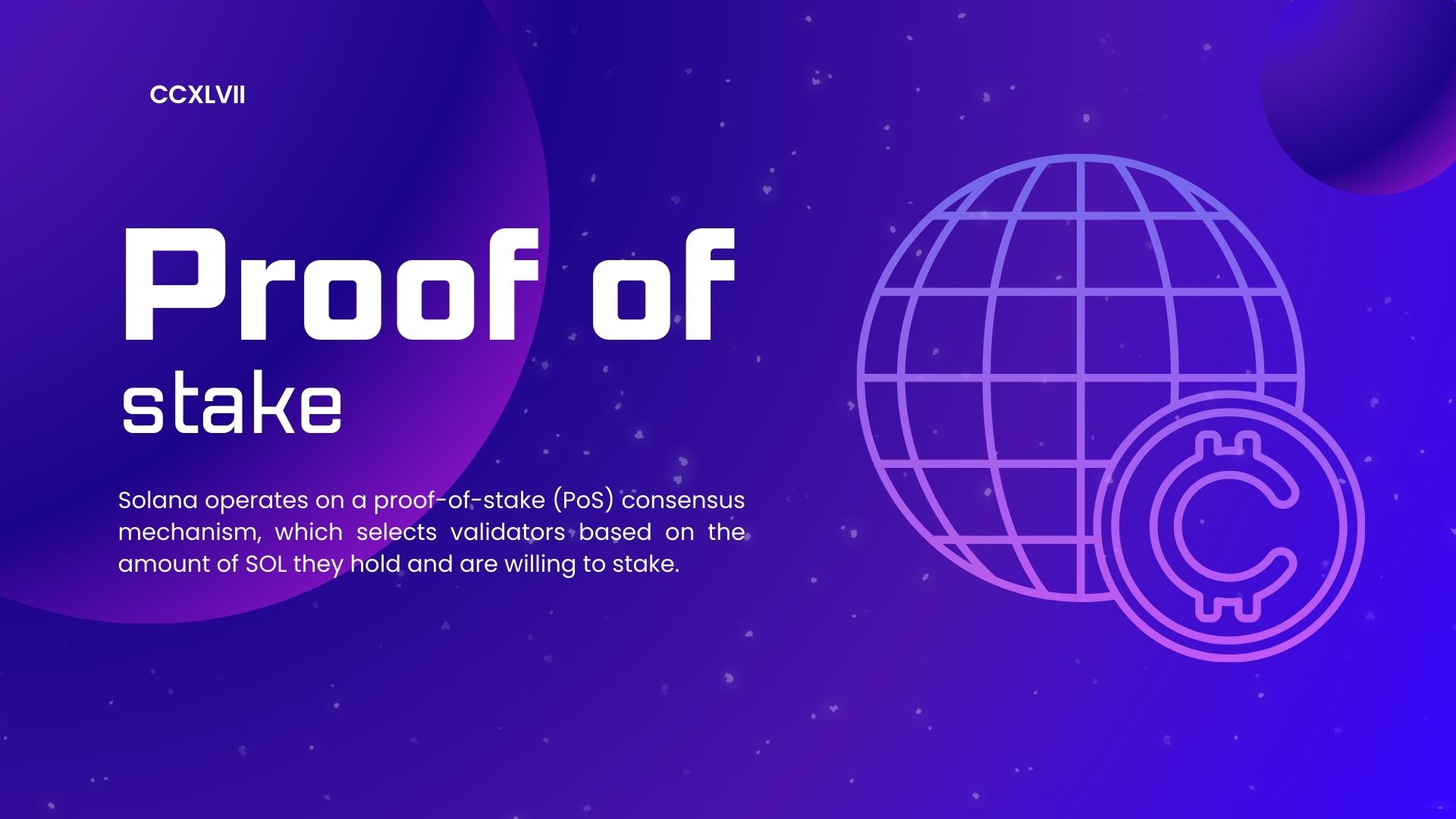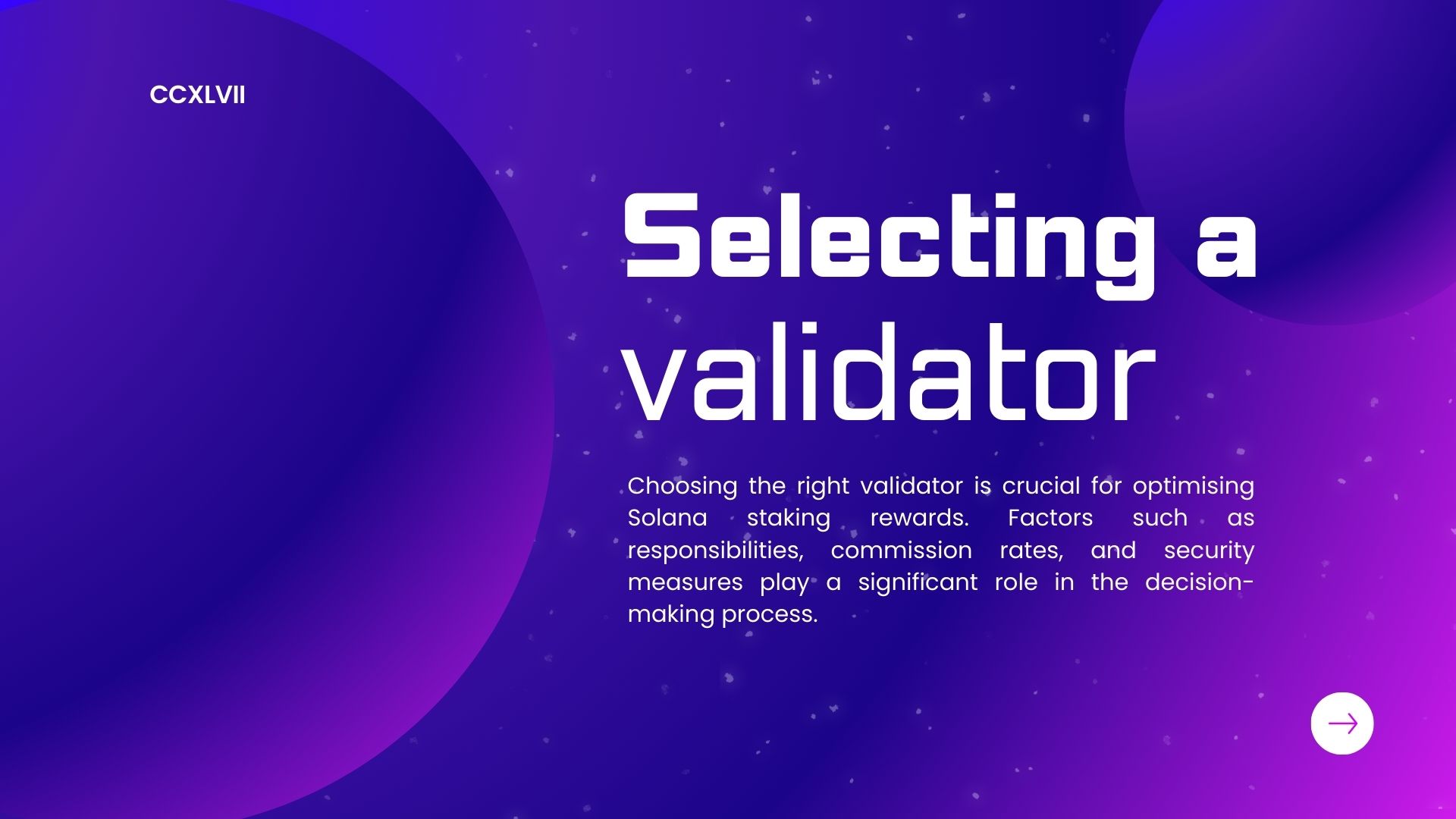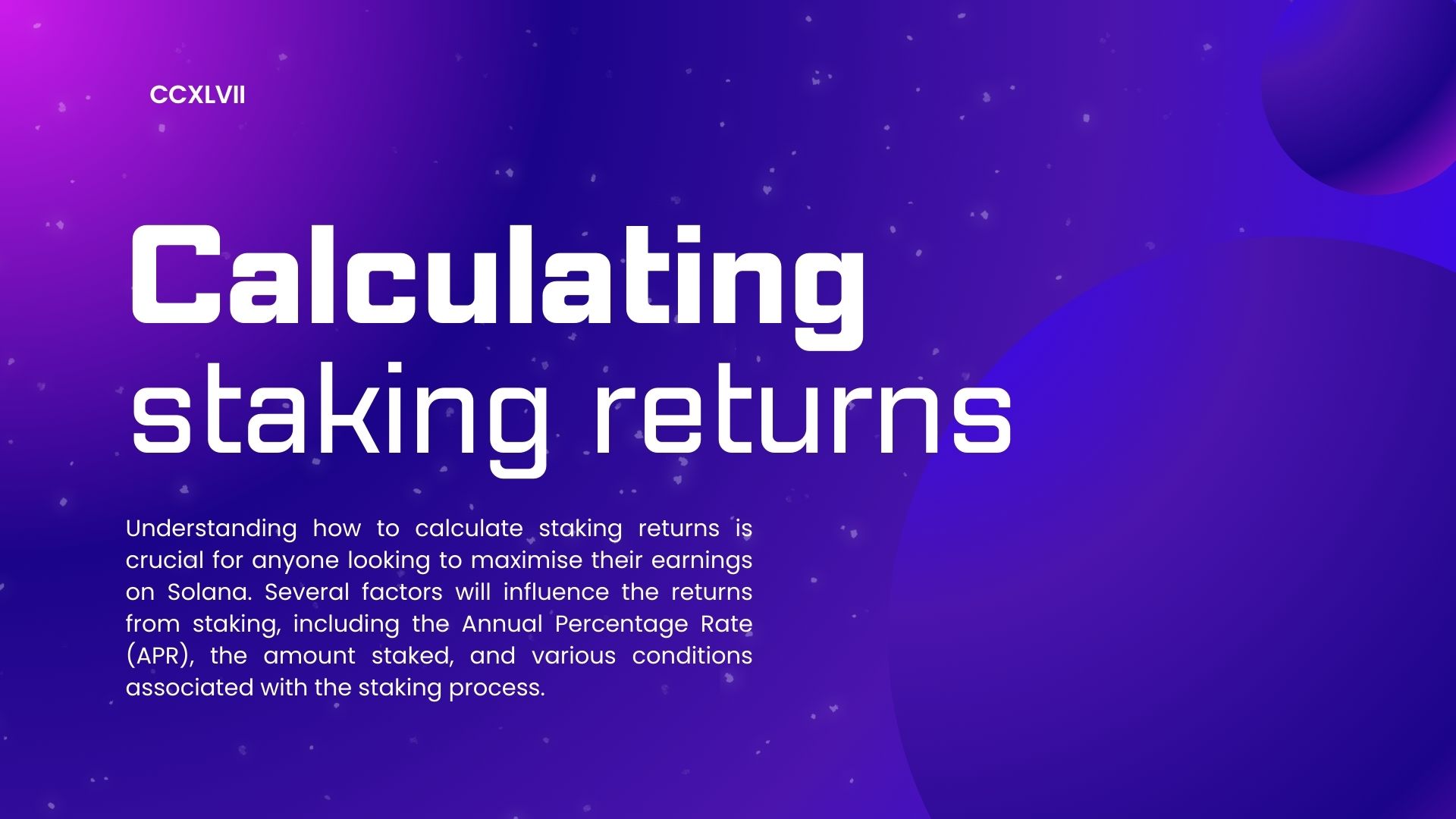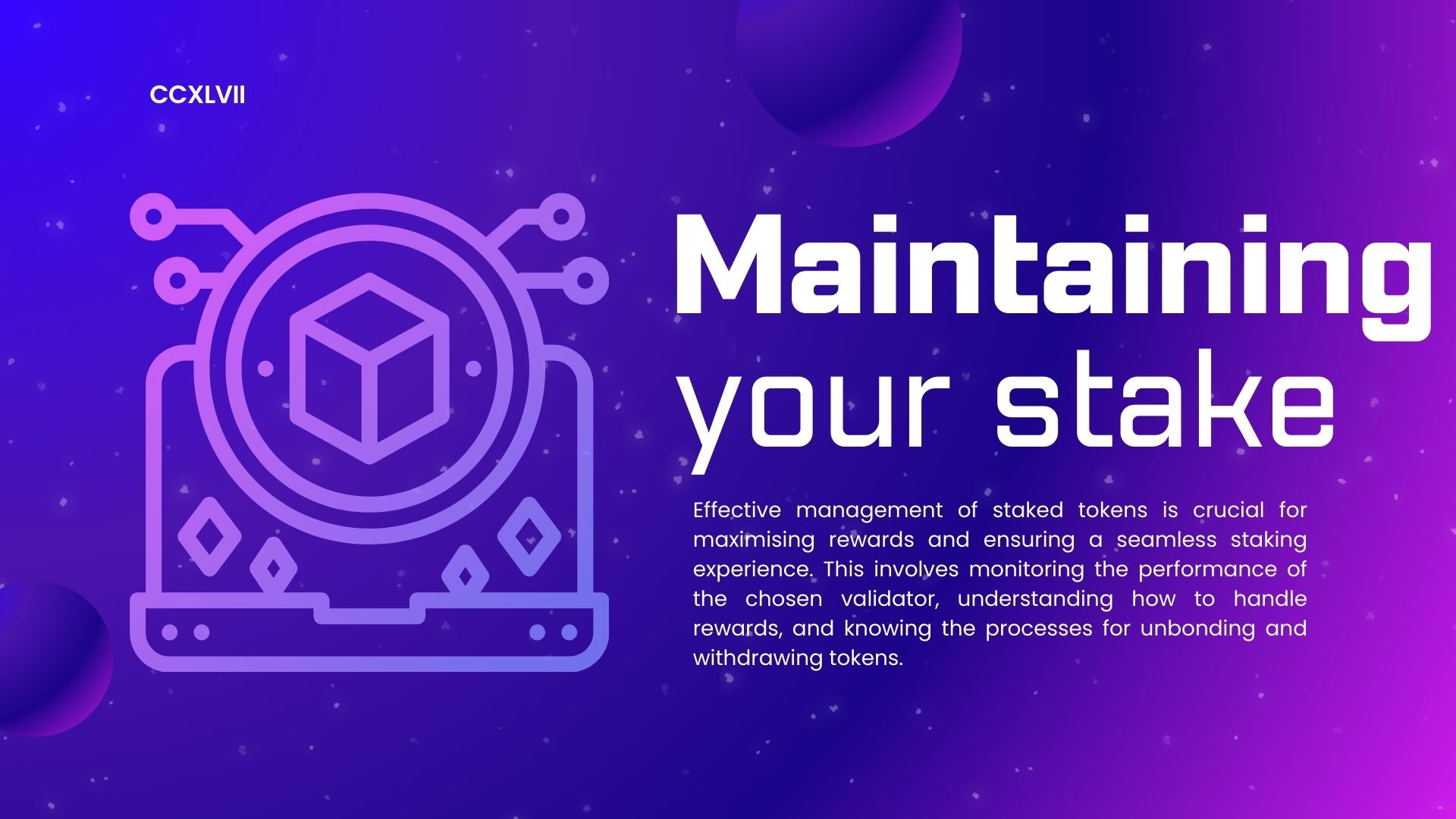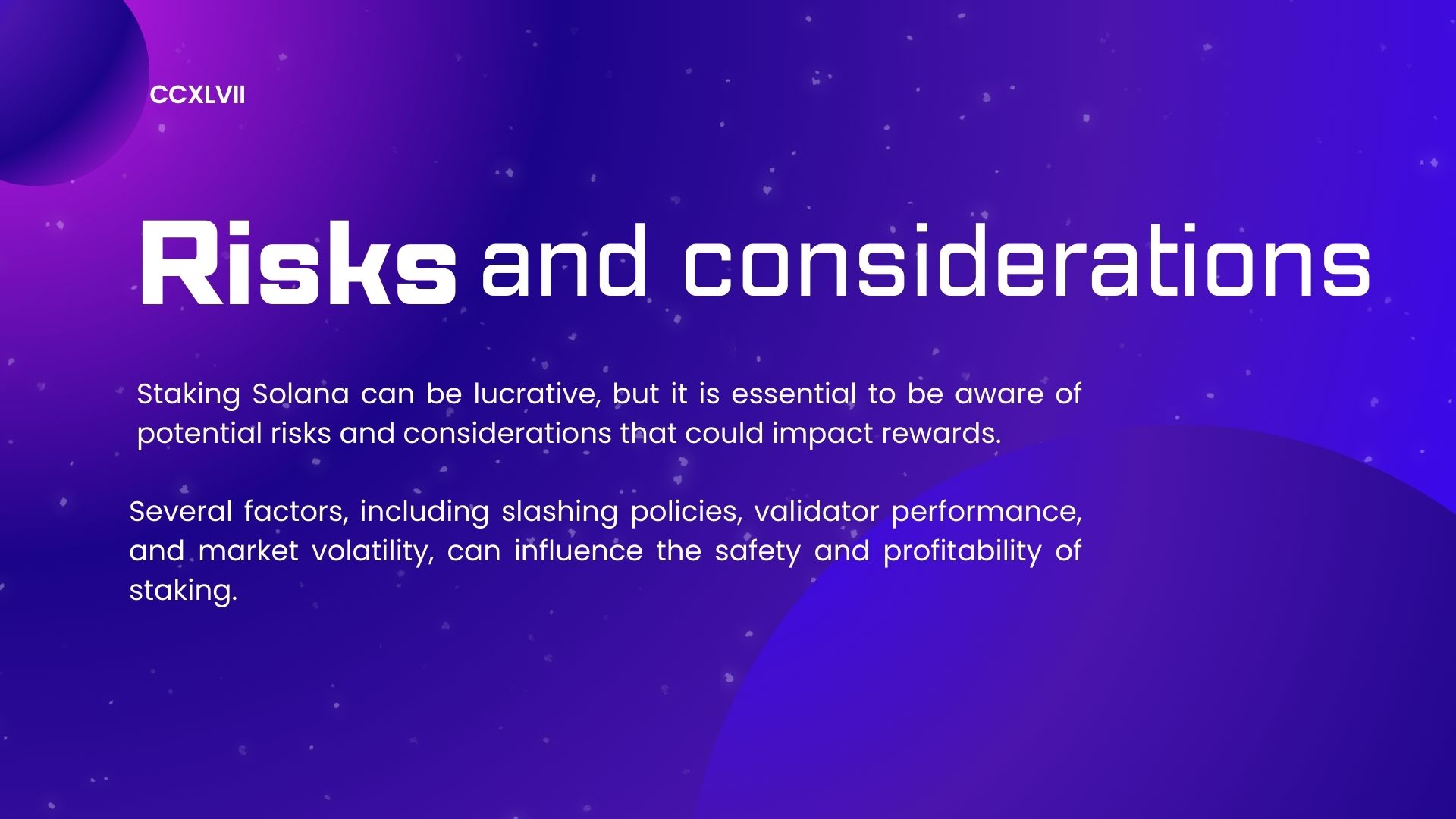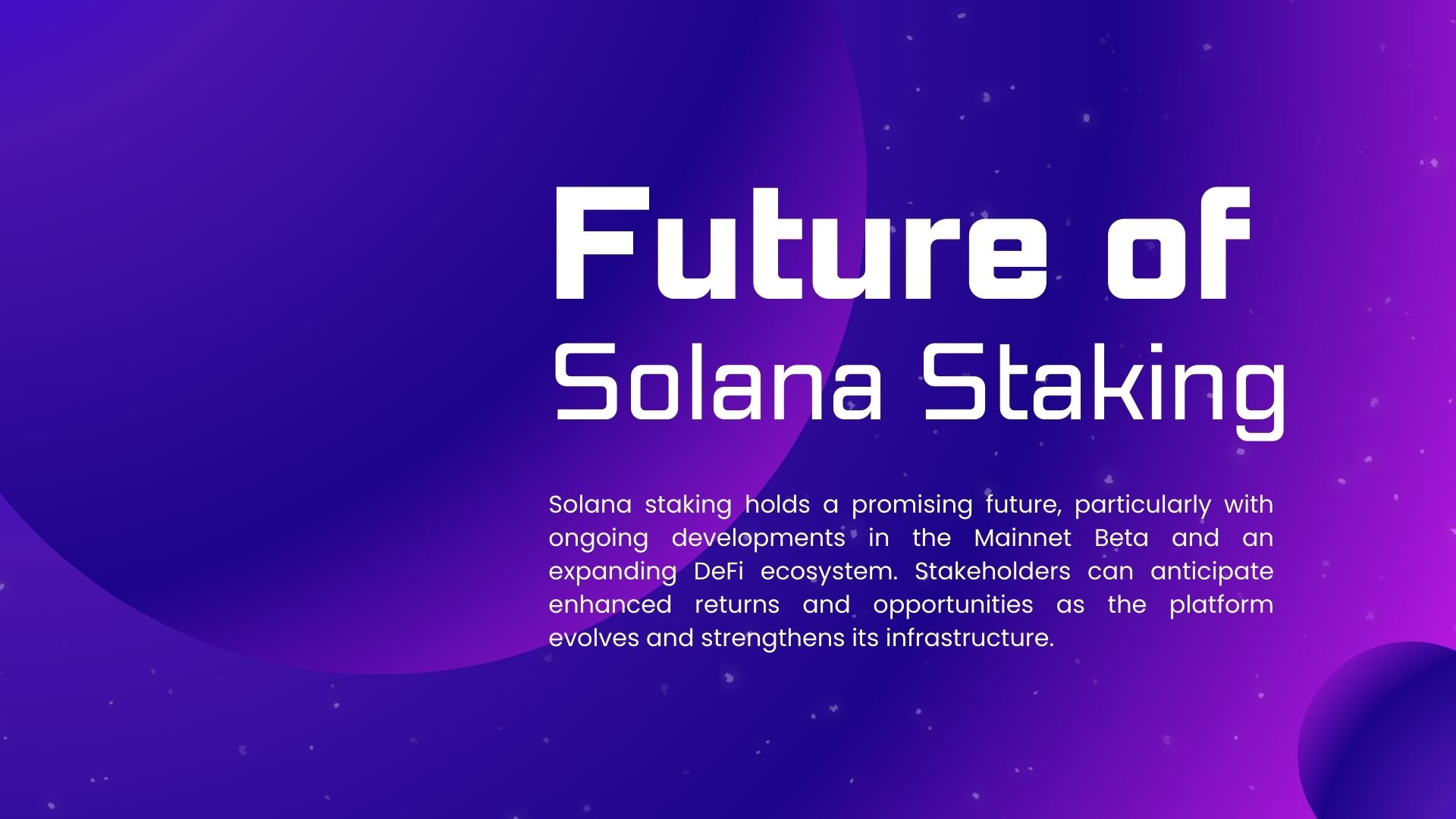Solana staking rewards present an opportunity for users to earn passive income by participating in the network’s security and operations.
By staking SOL tokens, participants can secure yields of approximately 6.90%, making it an appealing option for cryptocurrency holders seeking to maximise their investments.
This process not only contributes to the stability of the Solana blockchain but also allows individuals to engage actively in the ecosystem.
Staking on Solana involves locking up SOL coins to support consensus and transaction validation, providing both rewards and a stake in network governance.
Participants can choose from various validators, each offering different rates and benefits, which adds a level of strategy to the staking process.
Understanding these nuances is essential for anyone interested in harnessing the potential of their Solana holdings.
As the popularity of the Solana network continues to grow, so does the interest in its staking mechanisms. Investors looking for a reliable way to earn rewards while supporting innovative blockchain technology should explore the intricacies of Solana staking.
Understanding Solana Staking
Solana staking offers a unique opportunity to earn rewards while supporting the network’s security and efficiency. The following sections delve into the fundamentals of Solana, the basics of staking, and the proof-of-stake mechanism employed by the platform.
What Is Solana?
Solana is a high-performance blockchain platform designed for decentralised applications and crypto projects. It aims to provide fast transaction speeds and low fees, making it attractive for developers and users alike.
The native cryptocurrency of this ecosystem is the SOL token, which plays a key role in transaction fees and governance.
Solana’s architecture distinguishes itself from other blockchains with its capacity to process thousands of transactions per second. This efficiency is essential for supporting applications, especially in the fields of finance, gaming, and more.
Basics of Staking
Staking involves locking up a certain amount of cryptocurrency to support network operations.
In the case of Solana, users can create a staking account where they can delegate their SOL tokens to validators.
These validators validate transactions and maintain the network, earning rewards which are then distributed to their delegators.
To start staking, an individual chooses a validator based on factors like performance and community trust.
After delegating the stake, they begin earning rewards, typically paid out in SOL. Staking not only contributes to the network’s security but also allows token holders to generate passive income with their assets.
Proof of Stake on Solana
Solana operates on a proof-of-stake (PoS) consensus mechanism, which selects validators based on the amount of SOL they hold and are willing to stake.
This method enhances security and energy efficiency compared to traditional proof-of-work systems.
In this system, when a validator proposes a block, a confirmation process involves other validators reviewing and endorsing it.
The validators who participate in this process are rewarded with newly minted SOL and transaction fees.
This interconnected structure allows both validators and those who delegate their stake to benefit, reinforcing the importance of each participant in maintaining network integrity.
Staking Rewards Mechanism
The staking rewards mechanism on the Solana network is designed to incentivise users while securing the blockchain. By participating in staking, users can earn rewards while helping validate transactions and maintain the integrity of the network.
How Staking Rewards Are Generated
Staking rewards are generated through a combination of transaction fees and newly minted SOL tokens.
When users stake their SOL, they effectively delegate their tokens to a validator. This validator processes transactions and secures the network’s operations.
To compensate validators, a portion of transaction fees collected during these actions is redistributed as rewards to stakers.
As the network processes blocks, these rewards accumulate in the staking account of users, providing them with a steady source of income.
Solana Inflation Mechanics
The inflation model of the Solana network plays a crucial role in the generation of staking rewards.
Solana implements an initial inflation rate of approximately 8%, which gradually decreases to a long-term target of 1.5%.
This inflation incentivises new staking participants while ensuring that existing stakers continue to earn attractive rewards.
As more SOL tokens are staked, the total supply adjusts according to this inflation mechanic, providing stability and predictability to reward structures.
Reward Distribution Model
The distribution of staking rewards on Solana is intricate yet systematic. Validators receive rewards based on their performance, including transaction validation and uptime.
Stakers earn rewards proportional to their stake, and the distribution occurs after each epoch, typically lasting about two days.
This model encourages healthy competition among validators, as higher performance corresponds with better rewards.
Additionally, commission fees set by validators are deducted from the rewards before distribution to stakers, ensuring a fair allocation based on the service quality provided.
Setting Up for Staking
This section outlines the steps necessary to set up for staking Solana. Key actions include selecting a suitable wallet, creating a staking account, and understanding the stake delegation process.
Choosing a Wallet
Selecting the appropriate wallet is crucial for staking Solana. Two popular options are Phantom and Solflare. Both wallets support SOL and facilitate easy staking.
Phantom Wallet:
- User-friendly interface
- Supports hardware wallet integration
- Enables direct in-app staking
Solflare Wallet:
- Offers both custodial and non-custodial options
- Built-in staking features
- Provides more advanced functionalities for experienced users
It’s vital to ensure that the chosen wallet offers security measures such as two-factor authentication and backup options.
Once the wallet is set up, users can securely store and manage their SOL assets.
Creating a Staking Account
To partake in staking, users must create a staking account within their chosen wallet. For most wallets, this process is seamless.
Typically, the steps involve:
- Accessing the Staking Section: Find the staking tab within the wallet interface.
- Creating the Account: Select the option to create a staking account. This may require a small fee in SOL to cover transaction costs.
- Fund the Account: Users need to ensure that the staking account has sufficient SOL to delegate for staking.
Creating a staking account is often instant, allowing users to participate in staking promptly.
Stake Delegation Process
Delegating stakes is the final step to earn rewards. Users will need to choose a validator from a list provided in the wallet.
It’s essential to select a reliable validator with a good performance history.
The delegation process generally involves:
- Selecting a Validator: Research the validators and check their commission rates and performance metrics.
- Delegating the Stake: Enter the amount of SOL to delegate and confirm the transaction.
- Monitoring Rewards: After successful delegation, users can track their earnings and validator performance directly through their wallets.
By understanding these steps, users can set themselves up effectively for Solana staking rewards.
Selecting a Validator
Choosing the right validator is crucial for optimising Solana staking rewards. Factors such as responsibilities, commission rates, and security measures play a significant role in the decision-making process.
Validator Responsibilities
Validators on the Solana network have essential roles, including processing transactions and securing the network. They maintain validator nodes, which are computers that validate and confirm transactions on the blockchain.
Each validator performs critical tasks, such as participating in consensus, creating new blocks, and ensuring the accuracy of transactions.
Moreover, validators are responsible for monitoring their performance and uptime. High availability ensures that stakers receive consistent rewards.
Stakers should consider validators that have a proven track record of reliability and commitment. It is advisable to review the operational history of each validator for insights into their reliability.
Commission Rate and Performance
The commission rate is a key element that affects staking rewards. This fee, set by the validator, is deducted from the rewards before distribution to stakers.
Rates typically range from 0% to 20%, so selecting a validator with a balanced commission rate is advantageous.
In addition to the commission rate, performance metrics should be evaluated. This includes uptime percentage and the number of blocks produced.
A validator with a high uptime percentage is likely to generate more consistent rewards for stakers.
A list or table comparing different validators’ commission rates and performance will help stakers make informed choices, aligning their interests with a validator’s goals for optimal rewards.
Calculating Staking Returns
Understanding how to calculate staking returns is crucial for anyone looking to maximise their earnings on Solana. Several factors will influence the returns from staking, including the Annual Percentage Rate (APR), the amount staked, and various conditions associated with the staking process.
Annual Percentage Rate (APR)
The Annual Percentage Rate (APR) is a key metric in calculating potential staking returns.
For Solana, the APR typically ranges from 6.90% to 7.5% depending on the validator chosen and market conditions. This figure represents the percentage of returns on the staked amount over a year.
To estimate annual rewards, the formula used is:
Annual Reward = Amount Staked × (APR/100)
For instance, if an investor stakes 100 SOL at an APR of 7%, they can anticipate earning 7 SOL in rewards over the year.
It is important to note that the APR can change in response to network factors like the inflation rate and the total amount of SOL being staked.
Factors Influencing Returns
Several factors can impact the staking rewards earned.
Initially, the amount of stake directly correlates with potential returns; the more SOL held, the larger the rewards.
Commission rates charged by validators also play a significant role. Each validator takes a fee from the rewards earned, affecting net gains.
For instance, if a validator charges a 10% commission, only 90% of the earned rewards will go to the staker.
Additionally, the inflation rate influences the overall rewards structure on the network.
A higher inflation rate can lead to increased rewards, albeit at a risk of diluting the value of SOL.
Stakeholders should consider various validators and their performance metrics to optimise returns in the ever-changing staking landscape.
Maintaining Your Stake
Effective management of staked tokens is crucial for maximising rewards and ensuring a seamless staking experience. This involves monitoring the performance of the chosen validator, understanding how to handle rewards, and knowing the processes for unbonding and withdrawing tokens.
Post-Delegation Management
After delegating SOL tokens to a validator, continuous monitoring of its performance is essential. Validators can vary in uptime and commission rates, impacting the rewards received.
It’s advisable for the delegator to regularly check the validator’s statistics, which can usually be found on the blockchain’s staking dashboard.
To track rewards accurately, users should consider setting up alerts or notifications related to validator performance and staking rewards.
This proactive approach allows for timely adjustments if a validator is underperforming or if better options become available.
Handling Rewards and Re-staking
Staking rewards accumulate based on the validator’s performance and the overall network conditions.
It is essential for stakers to review how rewards are distributed, as some validators might have specific protocols for crediting rewards to staked accounts.
Delegators have the option to reinvest these rewards, known as re-staking, which can result in compounding benefits over time.
This process often involves enabling automatic re-staking features if available, allowing for a hands-off approach to maximising earnings without having to manually claim rewards.
Unbonding and Withdrawing
When a delegator decides to withdraw their staked tokens, they must be mindful of the unbonding period.
This period is typically set by the network and may last several days, during which the tokens remain locked and cannot be used.
Understanding the unbonding process is critical to ensure smooth transitions when moving funds.
Once the unbonding period concludes, the tokens can be withdrawn to the user’s wallet.
It’s also beneficial to plan accordingly, as timing can affect potential gains, especially in fluctuating market conditions.
Risks and Considerations
Staking Solana can be lucrative, but it is essential to be aware of potential risks and considerations that could impact rewards.
Several factors, including slashing policies, validator performance, and market volatility, can influence the safety and profitability of staking.
Slashing Policies
Slashing is a mechanism employed to discourage bad behaviour among validators. If a validator is found to be acting maliciously or irresponsibly, a portion of their staked tokens can be confiscated.
Delegators must remain vigilant about the validators they select.
Choosing a validator with a history of reliability can mitigate slashing risks.
If a validator fails to meet performance standards or is compromised, the penalties may directly affect delegators, resulting in lost rewards.
Understanding the specific slashing policies of the Solana network is crucial.
The conditions under which slashing occurs vary by blockchain and can influence a delegator’s potential earnings.
Validator Performance Risks
The performance of the chosen validator is a critical aspect of staking. If a validator experiences downtime or outages, their delegators may miss out on accumulated rewards.
It is advisable for delegators to assess validators based on their uptime, historical performance, and reputation within the network.
Validators with inconsistent performance can lead to lower staking rewards.
Malicious validators present a more significant risk, as their actions can result in slashing and may compromise the entire network’s integrity.
Regularly monitoring validator performance can help delegators make informed decisions to maximise their staking rewards.
Reliable platforms often offer dashboards for tracking performance metrics in real-time.
Market Volatility Impact
The cryptocurrency market is known for its volatility. Fluctuations in the market can significantly impact the value of staking rewards when converted to fiat currency.
For instance, even if staking rewards are earned consistently, a decline in the overall market value of Solana could diminish perceived profits.
Delegators should consider their investment horizon and risk tolerance when participating in staking.
Additionally, market sentiment can lead to sudden changes in the number of stakers, which can affect network dynamics.
Understanding these variables is vital for anyone considering staking on the Solana blockchain; it enables better preparation for potential financial shifts.
Comparing Solana Staking to Other Cryptocurrencies
When evaluating Solana’s staking rewards, it is essential to consider how they compare to other cryptos, particularly in the context of proof-of-stake (PoS) blockchains.
Key differences can be seen in transaction speeds, yield opportunities, and operational efficiencies among various networks.
Ethereum 2.0 Staking
Ethereum 2.0 has transitioned to a proof-of-stake model, allowing users to stake ETH to earn rewards.
The current annual yield for staking ETH typically ranges between 4-10%, depending on overall network participation.
Ethereum’s staking process is distinct; validators are required to lock up a minimum of 32 ETH to participate.
While Ethereum offers significant potential earnings, its network’s congestion can impact transaction speeds and fees, contrasting with Solana’s faster processing times and lower costs.
Furthermore, Ethereum’s shift is still ongoing, which introduces elements of risk and uncertainty for participants.
In comparison, Solana offers a more stable staking environment with predictable yields.
Staking on Other Proof-of-Stake Chains
Many other proof-of-stake chains, like Cardano and Polkadot, present alternative staking options.
Cardano’s staking rewards can reach approximately 5-6%, while Polkadot offers around 10-15% based on network activity and governance participation.
These platforms generally permit lower barriers to entry than Ethereum, with Cardano requiring no minimum stake for participation.
Polkadot’s structure allows participants to nominate validators easily, enhancing community engagement.
Solana stands out due to its high-speed transactions and competitive yields, making it an attractive option for users who prioritise efficiency and lower fees compared to these other networks.
Yield Opportunities Across Blockchains
Yield opportunities are diverse across various blockchains.
Solana typically provides staking rewards near 6-7%, appealing for those seeking passive income through efficient delegation of SOL tokens.
In contrast, the yields for staking on networks like Sei and Tezos can vary, with Sei also promoting innovative features in yield staking.
Networks such as Tron and Polygon have unique staking mechanisms, often influenced by the strength of their respective ecosystems and community engagement.
Comparative analysis shows that while Solana’s rewards are competitive, other blockchains like Polkadot offer higher yields due to different consensus models and governance structures.
Users must weigh these factors against their staking goals and risk tolerance when choosing where to stake their assets.
Future of Solana Staking
Solana staking holds a promising future, particularly with ongoing developments in the Mainnet Beta and an expanding DeFi ecosystem. Stakeholders can anticipate enhanced returns and opportunities as the platform evolves and strengthens its infrastructure.
Mainnet Beta and Development Updates
The Solana network continues to build upon its Mainnet Beta, focusing on scalability and performance.
Recent developments have aimed to increase transactions per second (TPS) while ensuring security and decentralisation.
Innovations such as enhanced validator software and improvements to staking mechanisms are underway.
These upgrades aim to boost the staking rewards for delegators, making it more attractive to hold and stake SOL tokens.
Regular updates in the ecosystem signal a commitment to improving user experience.
This includes simplified processes for opening a staking account and accessing rewards, thereby encouraging higher participation rates.
Growing DeFi and Staking Landscape
The DeFi ecosystem surrounding Solana is rapidly evolving. Various platforms are integrating staking solutions that allow users to maximise their returns on staked assets.
Current trends show an increase in liquid staking, enabling users to maintain liquidity while earning rewards.
This flexibility could attract more delegators to the Solana network, subsequently enhancing the overall staking economy.
Furthermore, strategic partnerships with DeFi projects may expand the opportunities for SOL holders.
As user participation grows, the demand for efficient and high-performance blockchain solutions will likely spur innovation within the staking landscape.
Exploring Advanced Staking Concepts
Advanced staking concepts enhance the way holders engage with Solana’s network. Understanding these concepts can lead to increased efficiency and rewards for those participating in staking activities.
Liquid Staking and Derivatives
Liquid staking allows users to stake their SOL tokens while still maintaining liquidity.
Through this process, users receive a derivative token representing their staked assets, which can be traded or used in other DeFi applications.
For instance, platforms may issue a token like stSOL that reflects a user’s stake.
This enables investors to benefit from both staking rewards and the versatility of holding liquid assets.
Liquid staking is particularly valuable for those who wish to participate in the Solana network via wallets like Phantom or Solflare while keeping their options open in the broader crypto market.
Multi-Asset Staking Strategies
Diversifying staking assets can optimise returns on the Solana network.
Users can stake not only SOL but also other assets that support various validators. This approach spreads risk and can maximise staking rewards.
By distributing stakes among different assets and validators, users can benefit from unique reward structures.
It is crucial to evaluate validators’ performance metrics, such as uptime and fees, to make informed decisions.
Platforms like Ledger support multi-asset staking, allowing users to manage their portfolios seamlessly while potentially increasing their passive income.
Implications of Governance in Staking
Staking on the Solana network also involves governance participation.
Token holders, through their staked SOL, can vote on important proposals and network upgrades.
This governance mechanism is essential for enhancing decentralisation and maintaining the system’s integrity.
Engagement in governance allows stakers to have a say in the development of the blockchain.
It promotes a more community-driven approach to upgrades and changes.
The implications of governance underscore the importance of active participation among stakers, as their votes help shape the future of the Solana network.
Managing Transaction Fees and Costs
Transaction fees play a crucial role in Solana’s staking process. Understanding these fees and effectively managing costs can significantly influence staking rewards and overall profitability. Below are key insights into transaction fees and strategies to mitigate costs.
Understanding Transaction Fees on Solana
On the Solana network, transaction fees are relatively low compared to other blockchains.
Typically, these fees range from $0.0001 to $0.01 per transaction, making it economical for users to stake.
When delegating SOL tokens to validators, transaction fees apply.
Staking involves not only the initial delegation but also potential transaction costs for rewards withdrawals or redelegation.
Each time a user interacts with the network, whether through their Phantom wallet or another platform, a fee applies.
Validators are responsible for handling various transactions, and their performance can affect fees.
It’s essential to choose a reputable validator to minimise costs and ensure efficient management of staking operations.
Mitigating Costs and Maximising Returns
To maximise returns from staking, users can adopt several strategies to manage transaction costs.
Selecting a validator with competitive fees is crucial, as fees may vary significantly.
Furthermore, users can consolidate transactions. Instead of withdrawing rewards frequently, users can wait until a more substantial amount accumulates.
This approach reduces the number of transactions, thereby minimising cumulative fees.
Utilising tools such as staking calculators can help users gauge potential rewards against expected transaction costs, enabling informed decisions.
Additionally, users should monitor network conditions. During times of low congestion, fees tend to decrease, making it an optimal time for transactions related to staking activities.

